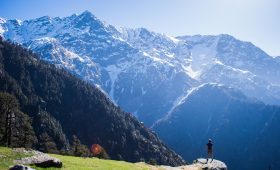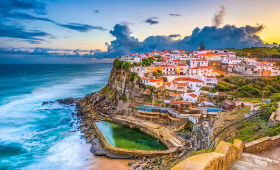Exploring Rila Monastery: Bulgaria’s Cultural Treasure
Rila Monastery, located in Bulgaria’s Rila Mountains, is a site of profound historical and cultural significance. Founded in the 10th century by St. John of Rila, a hermit who became a saint in the Orthodox Church, this monastery is a testament to Bulgaria’s spiritual and cultural heritage. Recognized as a UNESCO World Heritage site, it offers a unique glimpse into the past.
The Historical Journey of Rila Monastery
St. John of Rila’s ascetic lifestyle and his tomb turned the site into a revered place, eventually evolving into a monastic complex. It played a crucial role in the spiritual and social life of medieval Bulgaria. Although the monastery was destroyed by fire in the early 19th century, it was meticulously rebuilt between 1834 and 1862. This reconstruction is a prime example of the Bulgarian Renaissance, symbolizing the revival of Slavic cultural identity after centuries of foreign domination.
Architectural Highlights
The architecture of Rila Monastery is a striking blend of Byzantine, Bulgarian, and Renaissance styles. The main church is adorned with intricate frescoes that depict biblical scenes and saints, showcasing the exceptional artistry of Bulgarian craftsmen. Hrelyo’s Tower, a standout feature, offers panoramic views of the surrounding landscape and is a testament to the architectural ingenuity of its time.
A Natural Retreat in the Rila Mountains
Set against the backdrop of the Rila Mountains, the monastery is surrounded by lush forests, pristine lakes, and cascading waterfalls. This serene environment provides a peaceful retreat for visitors. The monastery’s gardens, filled with fragrant flowers and ancient trees, offer a tranquil escape from the chaos of daily life.
Optimal Visiting Times
Rila Monastery is accessible year-round, but the best times to visit are during spring and autumn. From April to June, the area bursts into life with blooming flowers and vibrant greenery. Autumn, from September to October, transforms the landscape into a tapestry of red, orange, and gold. These seasons offer mild weather and fewer crowds, enhancing the experience.
Getting to Rila Monastery
By Car
Driving to Rila Monastery offers flexibility. From Sofia, Bulgaria’s capital, take the E79 highway south towards Blagoevgrad. Follow the signs to Rila Monastery, and you’ll reach your destination in about two hours.
By Public Transportation
For those relying on public transport, regular buses run from Sofia to Rila Monastery. Departing from the Ovcha Kupel bus station, the journey takes approximately two and a half hours. It’s advisable to check bus schedules in advance, as they can vary by season.
Local Exploration and Accommodation
Once at Rila Monastery, exploring on foot is the best way to appreciate its compact complex. For those wishing to stay overnight, nearby accommodations range from cozy guesthouses to charming hotels. Booking in advance is recommended, especially during peak tourist seasons.
Rila Monastery is more than just a historical site; it’s a place where history, art, and nature converge. Whether you’re drawn by its architectural beauty, its serene natural setting, or its rich history, a visit here promises a memorable experience.




